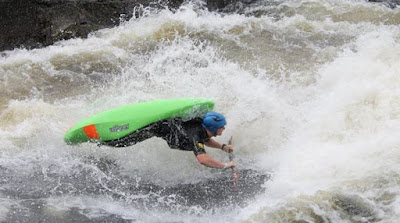I'm sure they had such high hopes for us at the time of the school graduation! Some of those faces aren't looking so fresh any more...
I finished secondary school in 2011 in probably the same confused state of mind about what to do next as most other people. I had a natural ability in applied maths and physics, a passion for the outdoors, and was torn between studying some form of engineering or the likes of the 'outdoor' courses in GMIT or IT Tralee. Fast forward four years; I'm graduating from UL with an engineering degree, proficiency in a whole pile of new outdoor sports, and not a whole lot has changed. The question of 'is office work really for me' rose it's head again, but when you're in final year of university and flat out with assignments and project work you don't really have time for inconvenient issues like that. So I fired off a couple of job applications for jobs in places with rivers nearby, and before the snow had melted from the ground that winter I had signed a year long contract with Liebherr Container Cranes in Killarney, County Kerry.
"Work"? Hardly! Fresh out of secondary school and getting paid to drive a bus around, chat to people and get a tan... Little me had things figured out back in the day!
After repeatedly changing the start date of that contract to make space for the freestyle and surf kayak world championships, I finally started work in September and started a year of kayaking, surfing and climbing as much as possible while sitting in an office for eight hours every day. Despite having what may seem like the ideal work - life balance and getting out on the water virtually every evening and weekend, all was not quite perfect. After a summer of adapting to training and competing full-time, sitting for eight hours every day felt very unnatural; looking around at the same four walls became monotonous very quickly and as soon as the clocks went forward for the winter sitting in an office seemed like a very poor way to spend the limited number of daylight hours. Additionally, driving for an hour or so each evening to go and play in the sea didn't sit very well with the concience for environmental reasons. Having said all that, the work I was doing was interesting and the colleagues were relaxed and easy to get along with. I was learning loads about engineering and grown-up life; and having hours every evening free from assignments and project work was a novelty that I wasn't used to after years spent studying!
It was a great year of getting out on the water on whatever craft suited the conditions!
So, turning down the offer of a permanant contract certainly wasn't the easiest decision I have ever made but now I'm looking forward to seeing what's going to happen next! The main goal for the future is to use the time I have until the savings run out to come up with some kind of long term plan, or else get so used to winging things that I realise I don't need a long term plan! Short term, I'm going back to last summer's schedule since I enjoyed that one so much. Training, competing and travelling is the plan for the next couple of months; starting with the surf kayak home internationals at the start of October, and then moving on to a surfing road trip to Portugal with a couple UL heads. I'll do my best to keep this blog updated along the way, it's going to be epic! A couple of short term jobs in between trips would be handy to keep the bank balance ticking over, and all the better if it's something outside. If anyone needs a body over the next couple of months and the work involves kayaking/ sailing/ surfing/ climbing/ freediving/ biking/ snowboarding/ skiing/ boat driving, or pretty much anything like that get in touch for a chat, the email is eoinkeyes at yahoo.com. Portfolios/ logbooks/ references/ whatever can be supplied if needed!
The culmination of two years of training and summers spent living in
tents in order to spend as much time as possible on the water. And
loving every minute of it!
Whatever happens over the next few months or years, it's going to be an exciting time! Free for the first time from the tyranny of classes, exams, timetables and work schedules; it's scary stuff! Worst case scenario I'll be running back to Liebherr a few months down the line looking for my old desk back but if so at least I'll know I tried. I'm sure there will be ups and downs, but that has to be more fun than cruising along at a happy medium. As a wise man once said; "I took the road less travelled, and that has made all the difference". If that quote is relevant or not will become clear as time moves on, but using it makes all the time spent in English classes feel slightly more productive!










